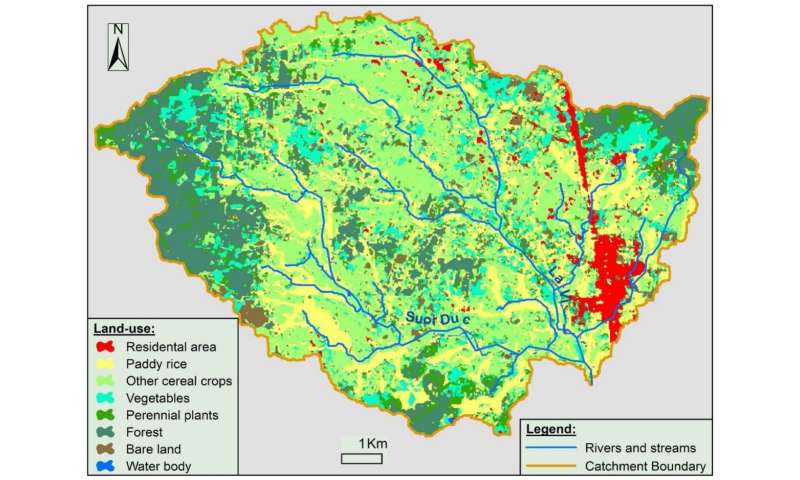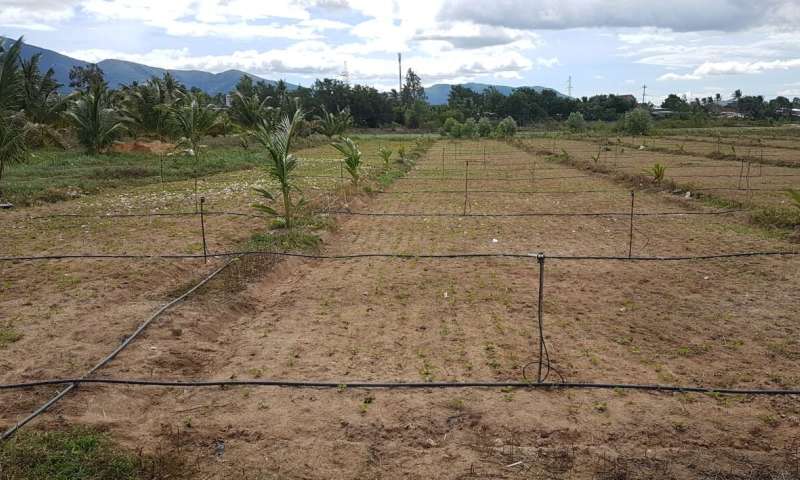Farmers help grow water plan
Published on by Water Network Research, Official research team of The Water Network in Academic

The heavily agricultural La Vi River Basin in Vietnam was the focus of the study. Credit: Flinders University
Overallocation of surface water for growing food crops is shifting agriculture and other industry to use groundwater—which is much more difficult to measure and monitor.
Using local producer knowledge as 'soft data' to estimate groundwater use in modeling is a helpful tool in mapping sustainable use of scarce resources, Flinders University experts say.
Environmental and water researchers from Flinders have described the technique in a new paper published online in the Journal of Hydrology: Regional Studies .
The heavily agricultural La Vi River Basin in Vietnam was the focus of the study, forming part of a five-year project funded by the Australian Centre for International Agricultural Research (ACIAR).
"Groundwater use for food and industrial production is increasing globally, putting pressure on groundwater resources and associated ecosystems," says Flinders University Professor Okke Batelaan.
"In many countries, particularly in developing regions as well as Australia's Murray-Darling Basin (MDB), this abstraction may be poorly organized and not regularly gaged for data."
The researchers, including John Allwright fellow Flinders Ph.D. candidate Manh Hai Vu, interviewed local farmers about their land use, agricultural practices and water use.

Overallocation of groundwater has seen Vietnamese farmers switch to more water efficient irrigation options. Credit: Dr Margaret Shanafield, Flinders University
The approach was very helpful in collecting base line information for future use—particularly when climate change or variable rainfall pose a threat to future water management, says Dr. Margaret Shanafield, from the National Centre for Groundwater Research and Training based at Flinders University.
"Although often thought of as a wet, tropical climate, Vietnam's South central coast has long dry seasons, and hence suffers from surface water shortages, similar to many parts of Australia," she says. "Groundwater use provides a significant solution to local farmers for producing cash crops and improving livelihood."
The system could also be used in Australia in areas such as the northern part of the MDB where groundwater is largely unmonitored.
The study developed a cost-effective and computationally simple solutions for estimating groundwater abstraction in data-poor agricultural regions, researchers say.
Taxonomy
- Agriculture
- Groundwater
- Groundwater Assessment
- Groundwater Modeling
- Agriculture
4 Comments
-
Very interesting study. Farmer's participation is critical for sustainable management of water resources. Would like to know more about the variables and methodology for data collection by farmers. would request you to share the study please.
-
In the above article the statement "The system could also be used in Australia in areas such as the northern part of the MDB where groundwater is largely unmonitored" is made. Which bits of the northern part of the MDB are you referring to where groundwater is largely unmonitored? NSW has excellent groundwater monitoring with an extensive network of monitoring bores and large users usage monitored and charged for.
-
good study. India has wonderful study on this aspects of drip irrigation system for farmers in dry regions for most o the crops. IARI, ICAR are the main pioneering institutes doing wonderful work on this aspect.
K.K.Nathan
-
I would like to have the full study